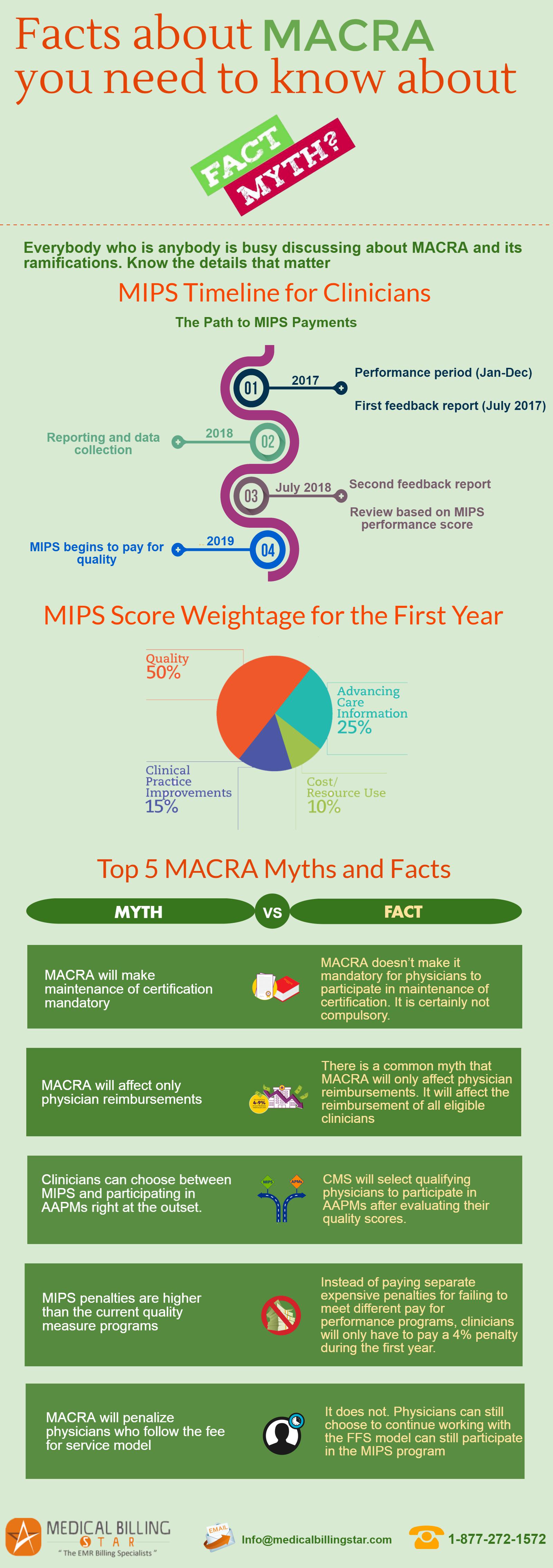MACRA is here and the new program is going to sunset several (un) popular programs such as Meaningful Use and the Value Based Payment Modifier model. Everybody who is anybody is busy discussing about MACRA and its ramifications. But as with any big updates the myths are jostling for space with the facts. We’ve sifted the facts from the myths for you.
Myth #1: MACRA will make maintenance of certification mandatory
Fact #1: MACRA doesn’t make it mandatory for physicians to participate in maintenance of certification. It is certainly not compulsory.
Myth #2: MACRA will affect only physician reimbursement.
Fact #2: There is a common myth that MACRA will only affect physician reimbursements. It will affect the reimbursement of all eligible clinicians. The eligible clinicians who will have to report under MIPS are physicians, physician assistants, nurse practitioners, clinical nurse specialists, certified registered nurses and anesthetists.
Myth #3: Clinicians can choose between MIPS and participating in AAPMs right at the outset.
Fact #3: All eligible clinicians will report under MIPS during the first year. CMS will select qualifying physicians to participate in AAPMs after evaluating their quality scores.
Myth #4: MIPS penalties are higher than the current quality measure programs
Fact #4: MIPS stream lines and consolidates 4 different programs under one umbrella. Instead of paying separate and sometimes expensive penalties for failing to meet different pay for performance programs, clinicians who report under MIPS will only have to pay a 4% penalty during the first year.
Myth #5: MACRA will penalize physicians who follow the fee for service model
Fact #5: It does not. Physicians can still choose to continue working with the FFS model can still participate in the MIPS program.
Click on the image below to enlarge
Fact #1: MACRA doesn’t make it mandatory for physicians to participate in maintenance of certification. It is certainly not compulsory.
Myth #2: MACRA will affect only physician reimbursement.
Fact #2: There is a common myth that MACRA will only affect physician reimbursements. It will affect the reimbursement of all eligible clinicians. The eligible clinicians who will have to report under MIPS are physicians, physician assistants, nurse practitioners, clinical nurse specialists, certified registered nurses and anesthetists.
Myth #3: Clinicians can choose between MIPS and participating in AAPMs right at the outset.
Fact #3: All eligible clinicians will report under MIPS during the first year. CMS will select qualifying physicians to participate in AAPMs after evaluating their quality scores.
Myth #4: MIPS penalties are higher than the current quality measure programs
Fact #4: MIPS stream lines and consolidates 4 different programs under one umbrella. Instead of paying separate and sometimes expensive penalties for failing to meet different pay for performance programs, clinicians who report under MIPS will only have to pay a 4% penalty during the first year.
Myth #5: MACRA will penalize physicians who follow the fee for service model
Fact #5: It does not. Physicians can still choose to continue working with the FFS model can still participate in the MIPS program.
Click on the image below to enlarge



